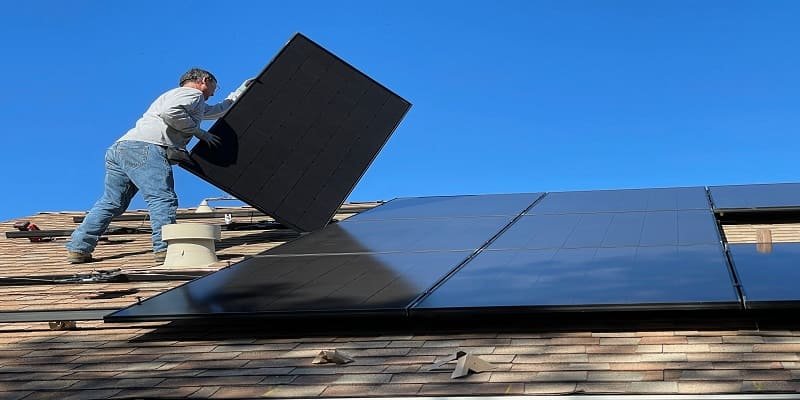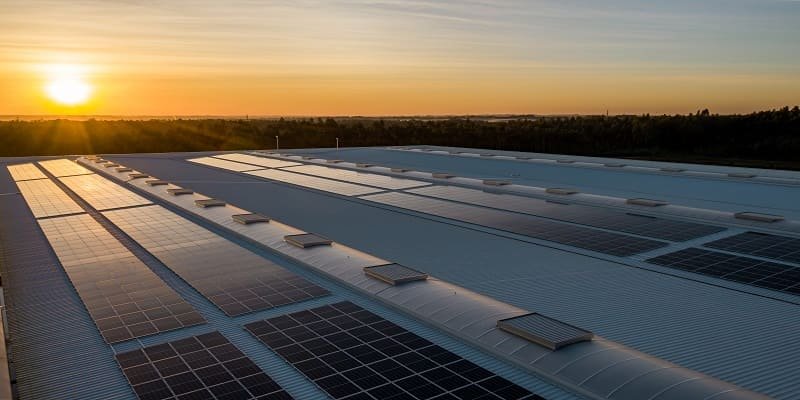In the world of solar power, understanding 300W solar panel dimensions is a game-changer for planning and setting up solar systems in our neighborhoods. So, what are these dimensions exactly? These panels have specific measurements that impact how they fit into a system. They’re not just your run-of-the-mill panels; their size matters a lot.
300W solar panel dimensions, we’re figuring out how to place them just right for maximum sun-soaking ability. It’s all about nabbing as much sunlight as possible to churn out that valuable solar energy. Understanding these aspects resembles having the mysterious recipe for a super-proficient sun-based arrangement with precisely the intended effect. The size and variety of a 300W solar panel charger are vital when integrating sun-based energy into private or business settings.
Table Of Contents
- 1 What are 300W Solar Panels?
- 2 Benefits of 300W Solar Panel:
- 3 Average Dimensions
- 4 Variations in Size
- 5 Impact on System Design
- 6 Solar Panel Output
- 7 Drawbacks of 300W Solar Panel
- 8 7 Key Factors of 300W Solar Panel
- 9 Conclusion
- 10 FAQs:
- 11 Q1. What is a 300W solar panel?
- 12 Q2. What are the dimensions of a 300W solar panel?
- 13 Q3. How much power can a 300W solar panel produce?
- 14 Q4. What are the applications of a 300W solar panel?
- 15 Q5. What are the differences between monocrystalline and polycrystalline 300W solar panels?
What are 300W Solar Panels?
300W solar panels are champions in the world of renewable energy. It converts sunlight into clean electricity with photovoltaic cells. An average panel measures 36×65 inches and weighs 10-20 pounds.
A 300W solar panel’s electricity output depends on a few factors, such as the amount of sunlight it receives, its efficiency, and the temperature outside. To calculate its output, you can use this formula: If the panel receives 8 hours of sunshine daily, it can generate approximately 2.5 kilowatt-hours of power per day.
Benefits of 300W Solar Panel:
Here are some essential benefits of 300W Solar Panels step by step:
- These panels pack a punch, generating more electricity compared to lower-wattage models, giving you more energy to work with.
- Despite their power, they’re designed to be space-savvy, making them an excellent fit for smaller areas, like rooftops or limited spaces.
- They’re versatile, allowing for various installation options, whether you’re setting them up on your home or a larger commercial building.
- They balance power output and cost, providing a sweet spot for getting substantial energy without breaking the bank.
- By harnessing solar power, they reduce carbon footprints, offering cleaner energy and a greener planet.
Average Dimensions
The dimensions of 300W solar panels are a big deal when setting up your solar game. These panels aren’t just about their power output; their size matters significantly in the grand scheme. These measurements are like the blueprint for a perfectly tailored solar system. Understanding 300 watt solar panel dimensions is not just about knowing their size. It’s also important to consider where they will fit, how much space they will require, and how they will integrate with other components of your solar setup.
Comparing models like the Go Power 200W panel helps determine their impact on power generation and performance. A panel’s size is a significant factor in its effectiveness.
Variations in Size
The 300-watt solar panel size can change depending on the number and size of the solar cells used in its development. Take, for instance, the Go Power 200-watt solar panel, which has aspects estimated at roughly 59.1 x 26.3 x 1.58 inches. Handling these varieties while picking the right solar panels to meet your energy needs and establishing prerequisites is fundamental.
Besides, solar panels come in various sizes, which is an urgent element to consider while choosing the one that suits your energy necessities. A 300W solar panel size differs, so it’s fundamental to comprehend these varieties to guarantee you pick the ideal fit for your necessities. It resembles finding the right-sized interconnecting piece to finish your energy puzzle.
Impact on System Design
The dimensions of a 300W solar panel are basic in deciding the space expected for the establishment and the general design of a sun-oriented energy framework. The size of the sunlight-powered chargers will influence the framework’s plan, making it fundamental to consider these aspects during the preparation and establishment.
The table underneath incorporates aspects of the leading five brands of 300W solar panels:
| Solar Panel | Product Dimensions (Per Panel) | Panel Weight (Per Panel) |
| Renogy RNG-300D 320-Watt Monocrystalline Panels | 39.4” by 65.6” at 1.4” thick | 9.93 lbs |
| WindyNation 300-Watt Solar Panel Kit | 21.25” by 39.17” at 0.98” thick | 13.3 lbs |
| Grape Solar GS-M60-US 300-Watt Solar Panels | 39.25” by 65” at 1.5“ thick | 10.75 lbs |
| ACOPOWER 300W Mono Solar RV Kit | 20.1” by 40.2” at 1.4” thick | 12.78 lbs |
| DOKIO 300W Portable Solar Panel Kit | 21” by 52” at 0.98” thick (unfolded) | 17 lbs |
Solar Panel Output
The amount of energy produced by a 300W solar panel is impacted by a few variables, including the quantity of pinnacle sun hours, the board’s effectiveness, and its temperature. To figure the power created, we might utilize the equation: Measure of Force Delivered (Wh) = Framework Size (W) x Pinnacle Sun Hours (h). This way, if a 300W solar panel is consistently presented to 8 hours of daylight, it will deliver around 2.5 kilowatt-long force stretches daily.
Drawbacks of 300W Solar Panel
Here are some critical drawbacks of 300w solar panels mentioned below step by step:
- Space Requirements:
Despite being more efficient than lower-wattage panels, they might need more space for installation due to their higher power output.
- Initial Cost:
While cost-effective in the long run, the upfront investment for these panels might be higher compared to lower-wattage alternatives.
- Weight:
Some 300W panels can be heavier, requiring sturdier mounting structures and challenging handling during installation.
- Maintenance Needs
Higher-wattage panels need regular maintenance, such as cleaning, to ensure optimal performance.
- Compatibility Issues
Not all systems or spaces are well-suited for these higher-wattage panels, limiting their applicability in specific setups.
7 Key Factors of 300W Solar Panel
There are many critical elements to consider when installing a 300W solar panel to guarantee best performance and efficiency. These elements are as follows:
- Available Space:
Assess the available space for solar panel installation. Determine whether the dimensions of the 300W solar panel align with the allocated area. Consider factors such as roof space, ground area, or other potential mounting locations.
- Sunlight Exposure:
Solar panels require sufficient daylight openness to create power productively. Guarantee the establishment region gets more than adequate daylight over the day without critical concealing from adjacent designs, trees, or different obstacles.
- Tilt and Orientation:
The slant and direction of the solar panel influence energy creation. To amplify energy age, the panel should be introduced at a point that permits it to catch the most daylight. On the northern side of the equator, boards are shifted southwards to advance sun exposure.
- Mounting and Structural Integrity:
Solar panels need a durable and secure mounting framework to endure natural factors like breezes, snow, and downpours. Guarantee that the mounting structure is suitably planned and introduced to help the weight and aspects of the 300W solar panel.
- Electrical Wiring:
Proper electrical wiring is vital for associating the solar panel with the electrical arrangement of the structure or property. Counsel a guaranteed circuit maintenance specialist to guarantee consistency with nearby electrical codes and security guidelines.
- Inverter Capacity:
The inverter changes the solar panel’s immediate flow (DC) into usable substituting flow (AC) power. Guarantee that the inverter’s ability matches the power result of the 300W solar panel to upgrade energy transformation.
- Building Permits and Regulations:
Check nearby structure grants and guidelines concerning solar panel establishments. Get essential, allow, and guarantee consistency with neighborhood codes and guidelines to avoid legitimate or security issues.
- Maintenance and Cleaning:
Regular solar panel maintenance and cleaning are essential to maintain optimal performance. Remove any debris or dirt that may accumulate on the panel’s surface to maximize sunlight absorption.
- Monitoring and Performance Evaluation:
Consider installing a monitoring system to track the performance and energy generation of the 300W solar panel. Monitoring systems provide valuable data to identify any issues or inefficiencies promptly.
Conclusion
The dimensions of a 300W solar panel, such as the average size, variations, and their impact on system design, are essential when incorporating solar energy into residential or commercial settings. By understanding these dimensions, individuals and businesses can make informed decisions regarding selecting and installing solar panels.
FAQs:
Q1. What is a 300W solar panel?
A 300W solar panel is a photovoltaic module that creates power by changing over sunlight into spotless and environmentally friendly power. It has a power result of 300 watts under standard circumstances, regularly estimated in watts (W).
Q2. What are the dimensions of a 300W solar panel?
Overall, a 300W solar panel measures around 36 creeps by 65 inches and can weigh somewhere between 10 to 20 pounds, contingent upon the producer.
Q3. How much power can a 300W solar panel produce?
A 300W solar panel, getting 8 hours of daylight every day, can create around 2.5 kilowatt-long periods of force day to day.
Q4. What are the applications of a 300W solar panel?
300W solar panels are appropriate for different applications, like private nearby planet groups, RV sun-based establishments, sun oriented applications on boats, and light private use.
Q5. What are the differences between monocrystalline and polycrystalline 300W solar panels?
Monocrystalline panels are more efficient but generally more expensive than polycrystalline panels. The efficiency of a solar panel is determined by how effectively it can convert sunlight into electricity.



